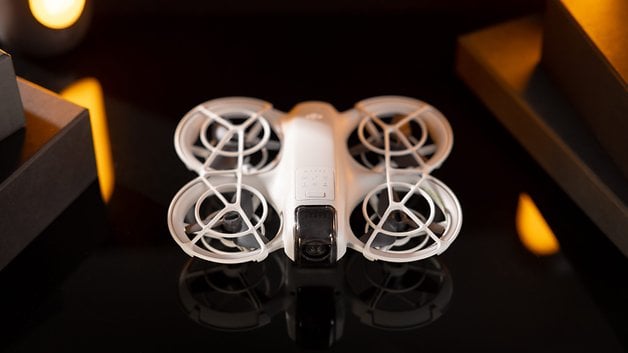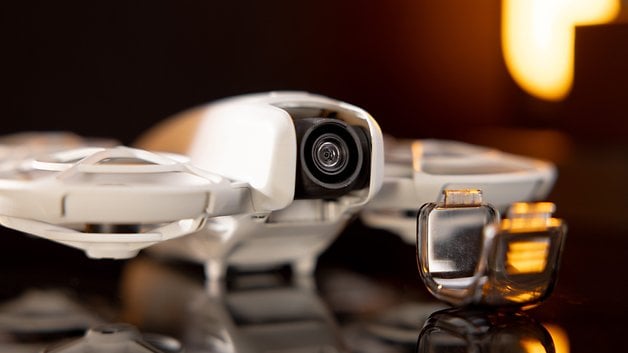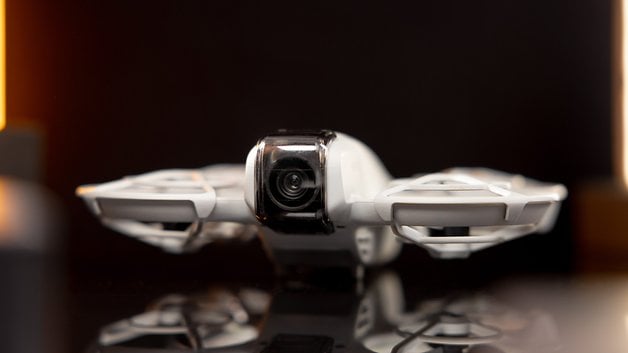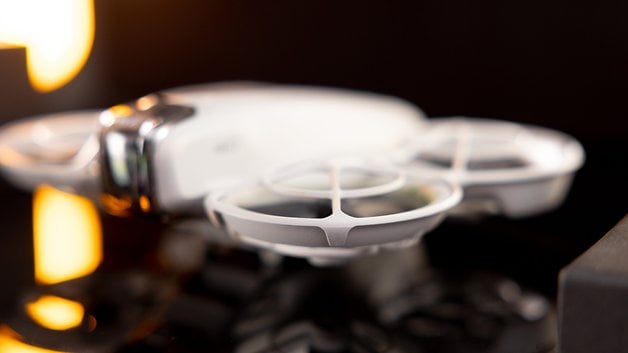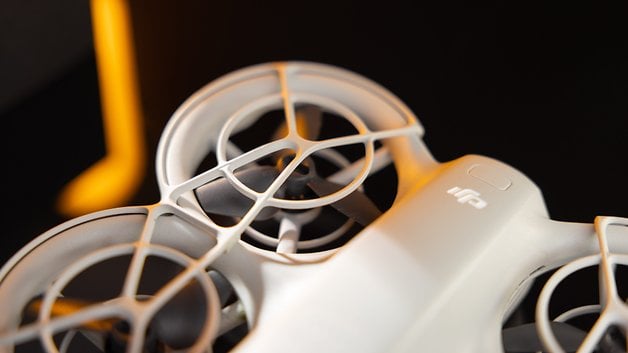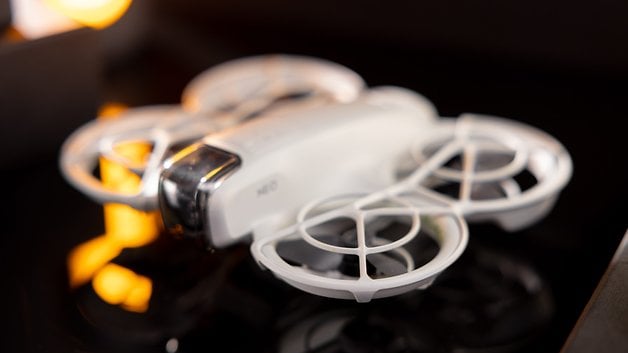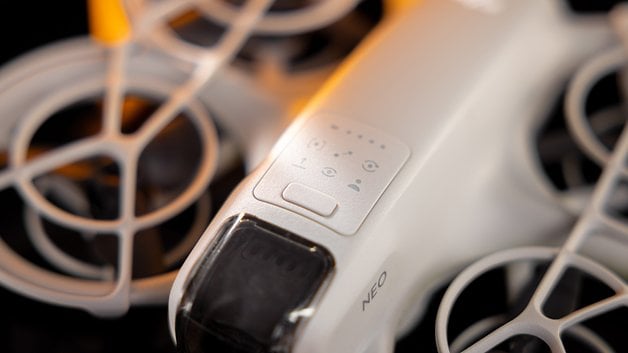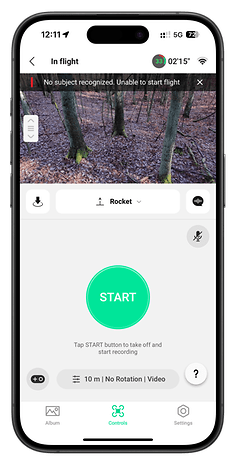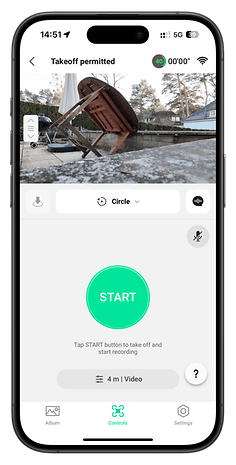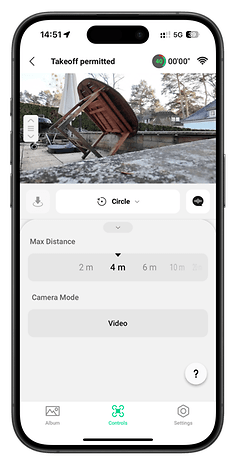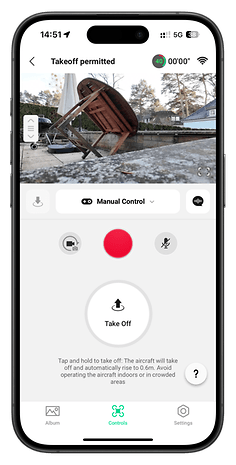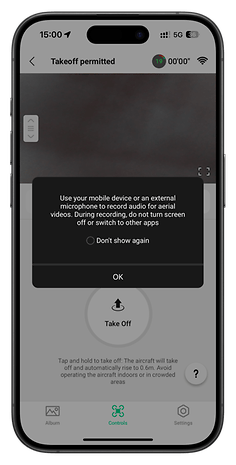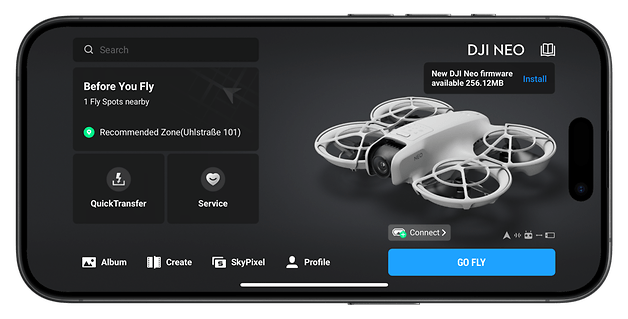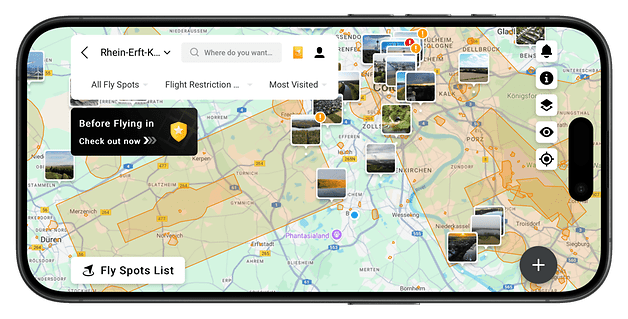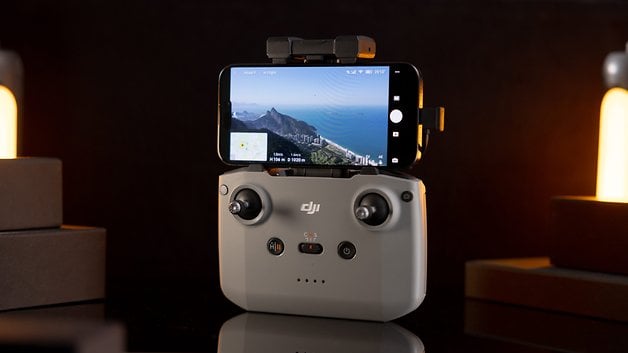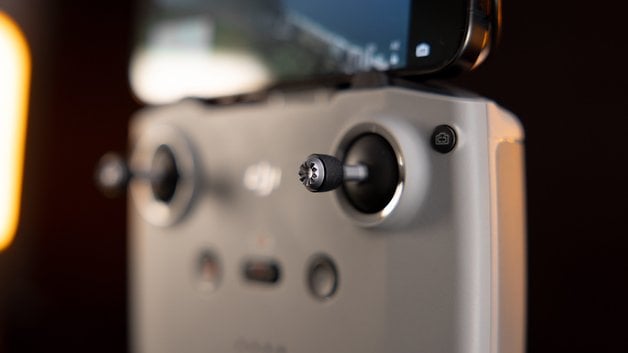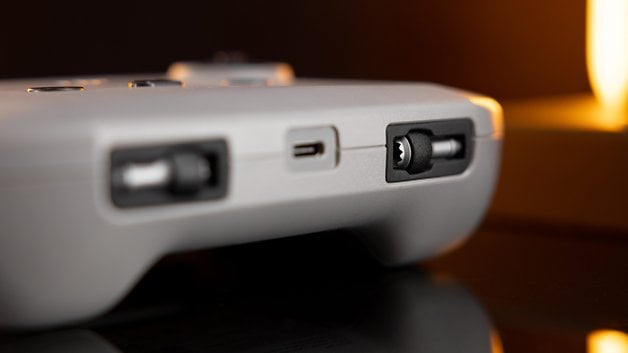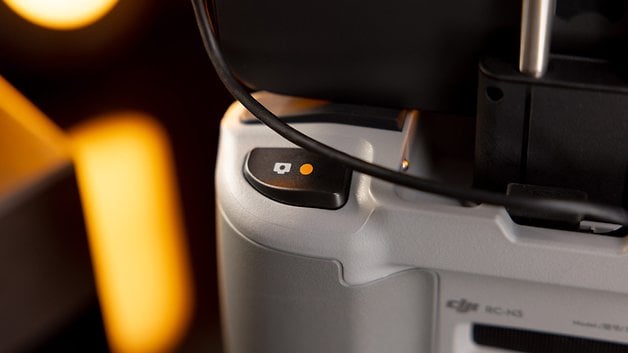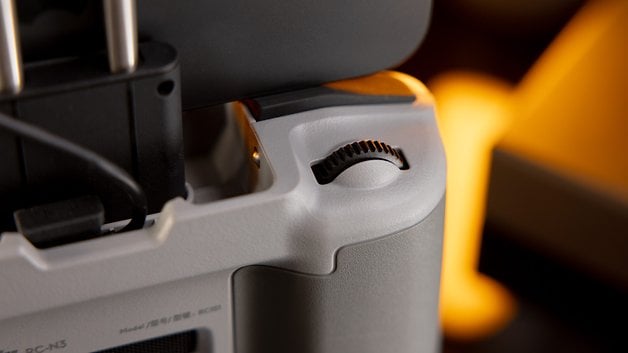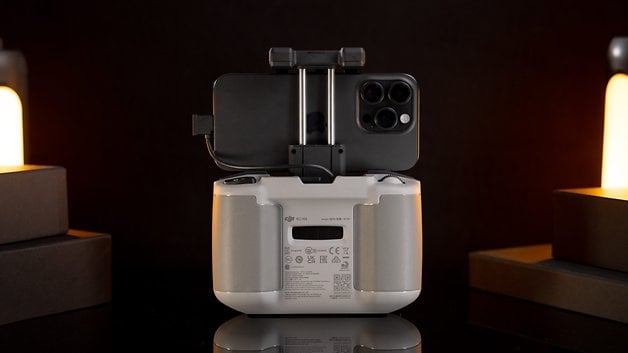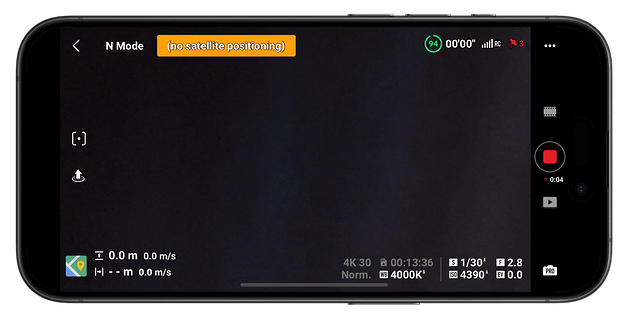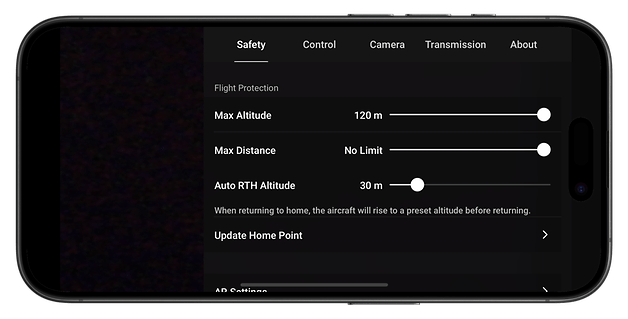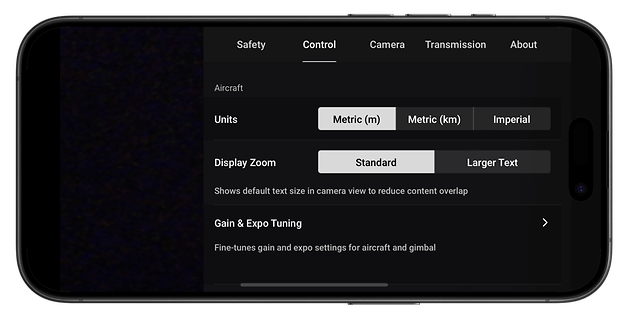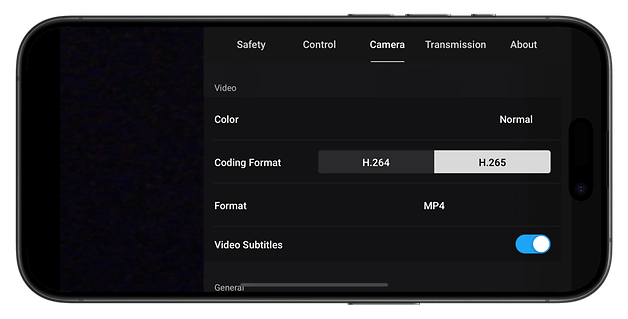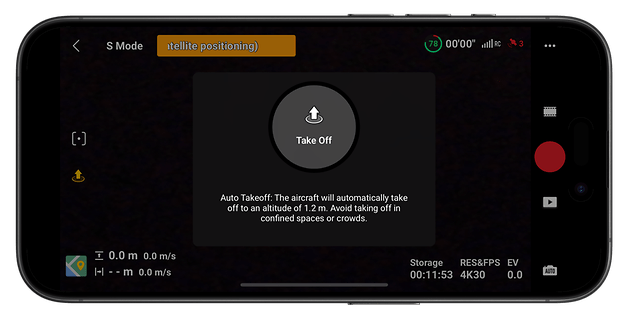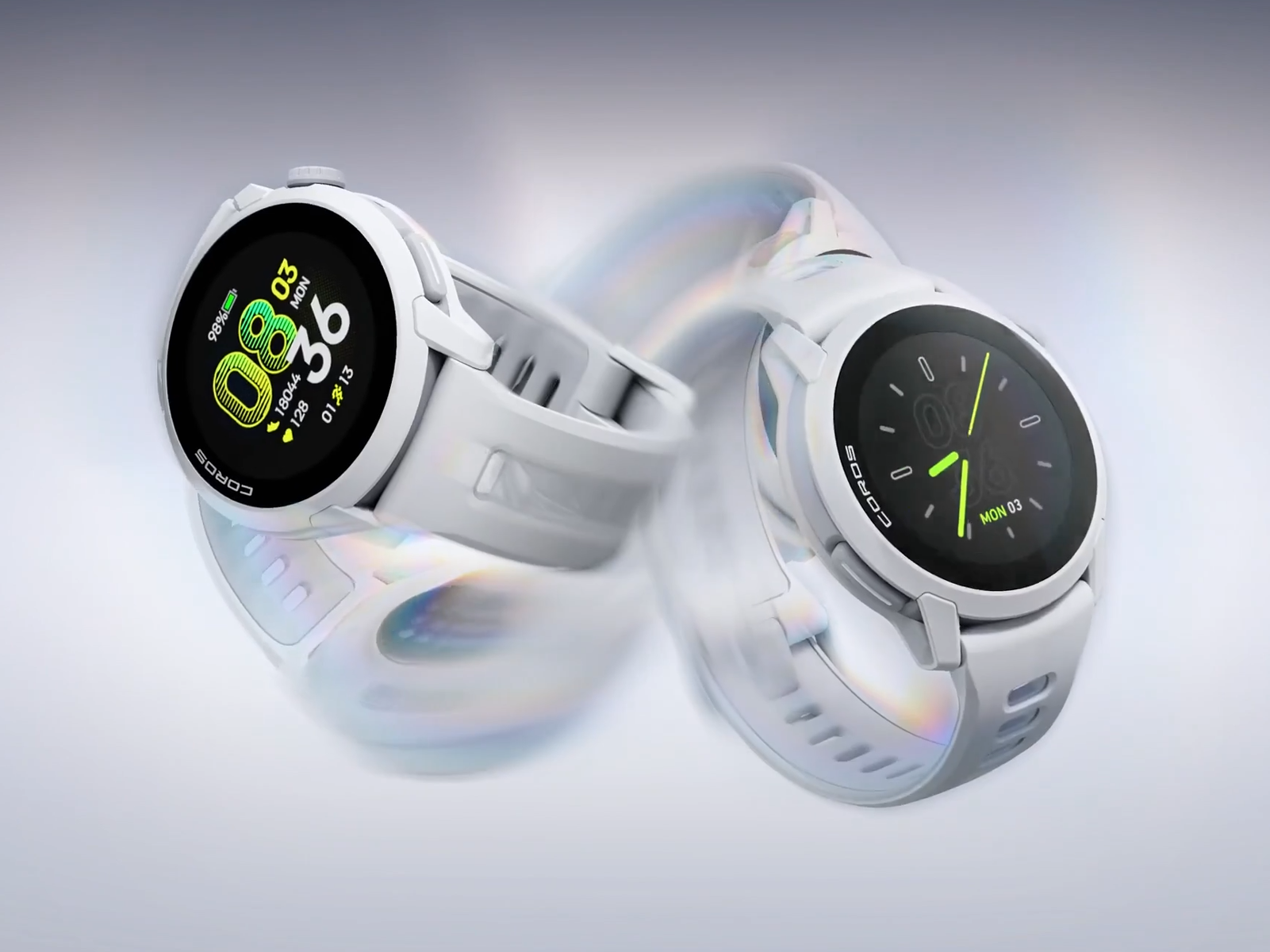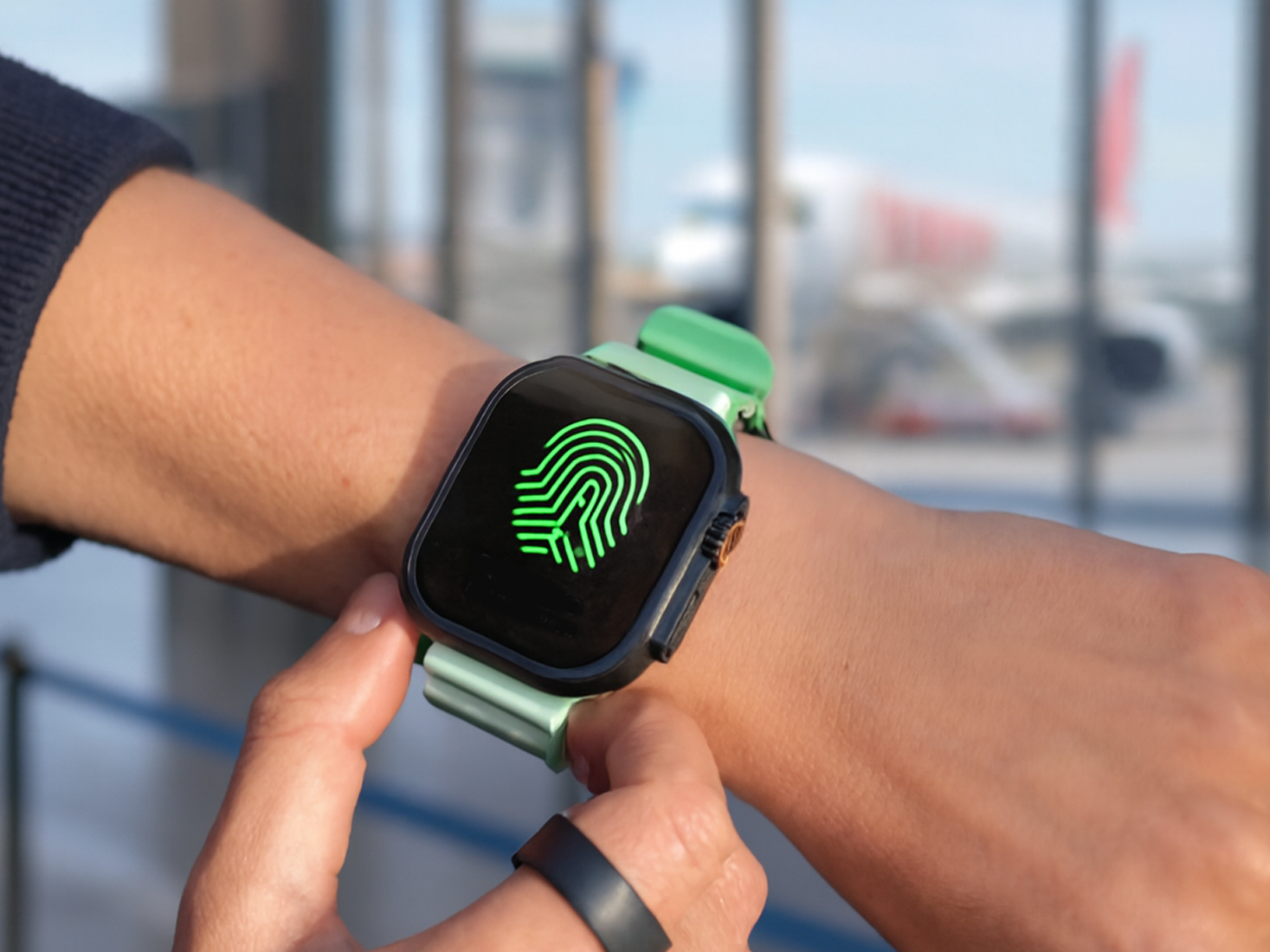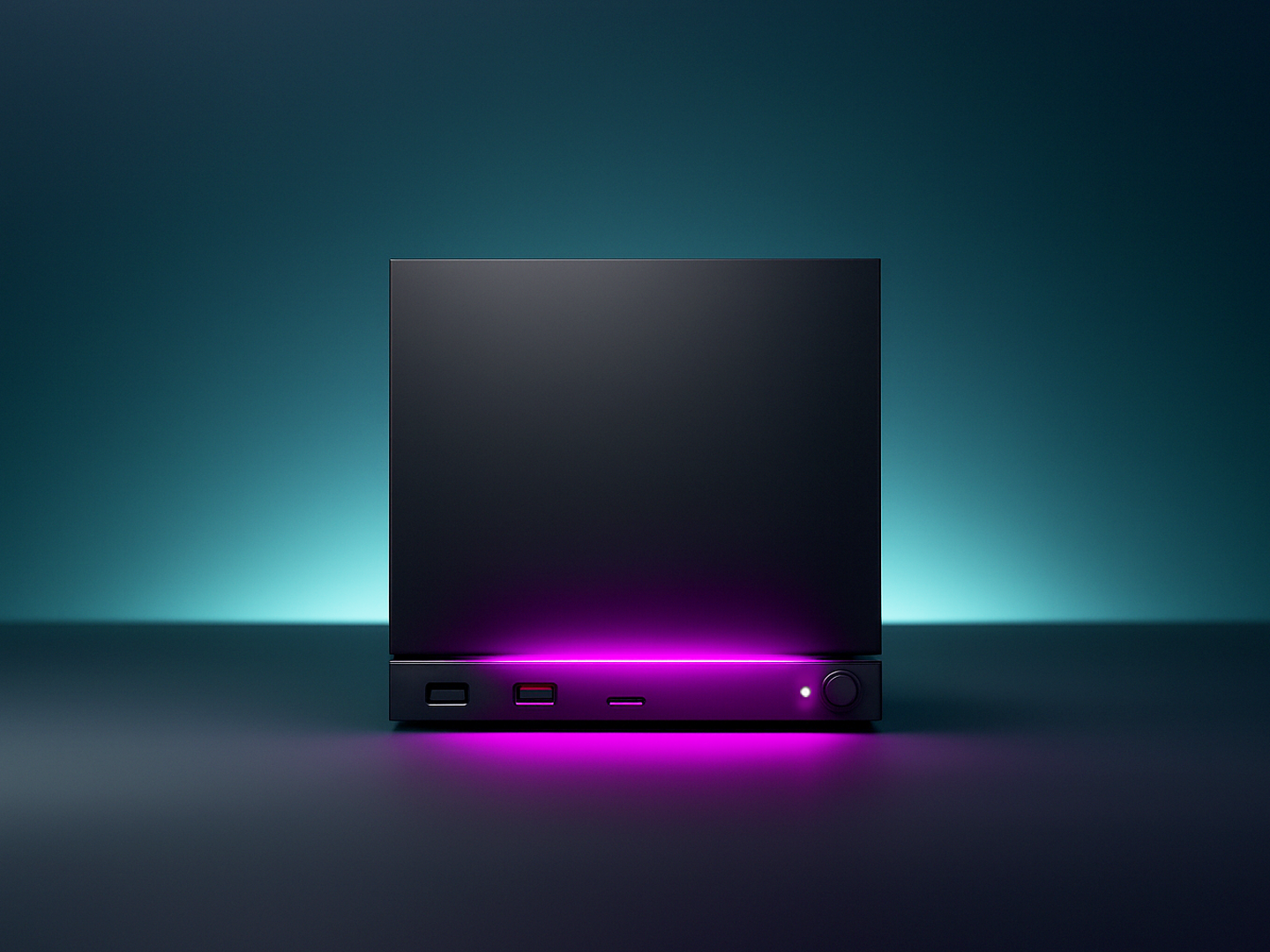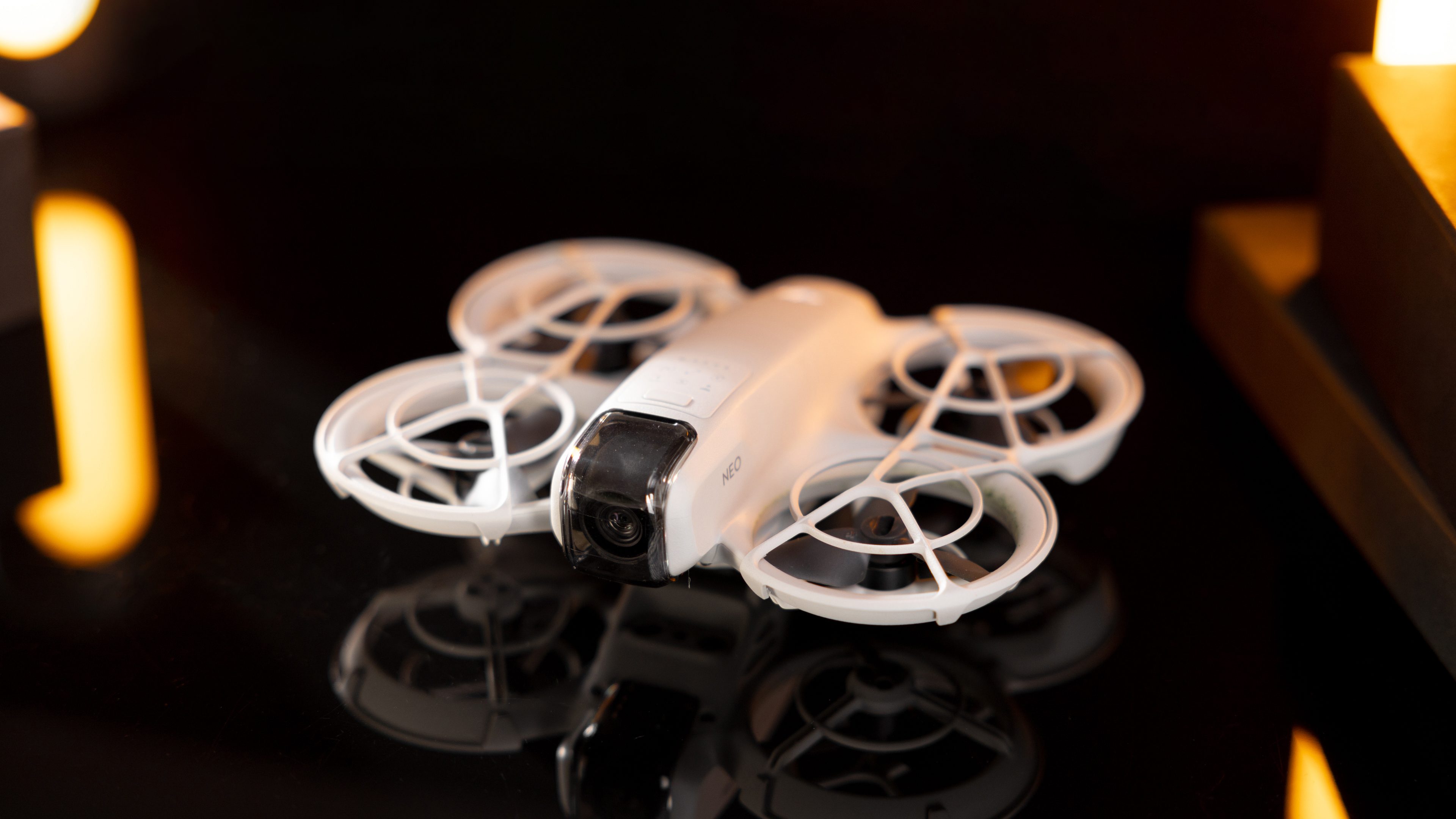
The DJI Neo achieves an impressive balancing act for $199: it is a fully automatic selfie drone for perfect YouTube and Instagram shots and also a fast and maneuverable mini drone. Find out what the flying selfie stick with racing genes can do in reality as nextpit reviews the DJI Neo.
Good
- Wide range of flight, control and recording modes
- Great flight characteristics and sophisticated controls in all modes
- Very comprehensive and successful app for iOS/Android
- Good image stabilization and decent image quality
- Extremely compact and lightweight
Bad
- Short range with control via smartphone (WLAN)
- Image quality too weak for large screens
- Limited obstacle detection
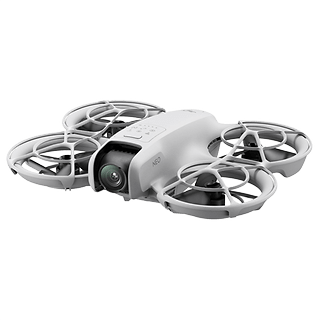
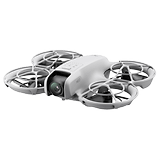
DJI Neo: All deals
DJI Neo design & operation
The plain, light gray DJI Neo is really tiny. Measuring a mere 15.7 x 13.0 cm, it is as long as the palm of my hand and about 50 percent wider. It easily fits into the pocket of my winter jacket and, tipping the scales at 135 g, is hardly noticeable. However, don’t let the mini form factor fool you—the drone really has a lot going for it!
The most important things to note:
- Dimensions: 130 × 157 × 48.5 mm.
- Take-off weight incl. battery: approx. 135 g.
- Battery weight: approx. 45 g.
- Flight modes: Control via drone, control via app, control via app and remote control, control via remote control and video goggles.
- Automatic flight modes: Follow, drone, circle, rocket, spotlight, direction, helix, boomerang.
- Safety features: propeller protection, return-to-home (RTH).
As mentioned in the bullet points above, there are three basic ways to control the drone: completely autonomous, via the smartphone app, via the smartphone app with a remote control, or via video goggles. Just what are the advantages and disadvantages of the different modes?
Controlling the DJI Neo without everything
On the top of the DJI Neo you will find two buttons, four round and one elongated LED as well as six illuminated LED pictograms. That’s all you need to control the drone. By tapping followed by pressing and holding the lower button, you can turn on the DJI Neo, while the five LED indicators show you the battery status.
Using the upper button, you can now choose between one of six flight modes, represented by the small symbols. The sixth mode is a “Custom Slot”, which you can assign to one of the other current three modes. A long press on the selection mode then triggers the launch process:
- Place the drone on the palm of your hand and hold it steadily at head height with the camera facing you.
- The drone recognizes your face and announces the start of its ‘journey’.
- The DJI Neo begins the selected flight maneuver and automatically takes photos or videos.
The flight maneuver always ends with you. Simply hold out the palm of your hand and the drone will automatically land. As crazy as that sounds, it usually works very well in reality.
Controlling the DJI Neo via the app
If you want more control, you can also connect the DJI Neo to the smartphone app. To do this, the drone launches a WLAN and you connect your smartphone to it. In the review, this usually works after the initial setup, although we had to go through the connection wizard a few times. This only took a few seconds, but is still a bit annoying. Hopefully a future firmware update will provide a remedy.
The launch process is then almost identical to the three steps mentioned above for controlling the drone alone. Select the desired mode in the app, press the start button, and hold the drone in the palm of your hand in front of your face.
The first advantage of the app is how you can customize the different modes. In follow mode, for instance, you can determine the distance or altitude at which the drone flies after you. In orbit mode, you can specify the radius in which the drone flies around you. We’ll return to the various flight maneuvers in more detail momentarily. The second advantage of the app is how you can view the video image and monitor whether the drone is capturing the correct image section at all times.
Third, you can also control the drone remotely via the app, although this is rather limited fun with the digitally responsive controls. You can only rotate the drone in flight—or not. It is not possible to begin the rotation smoothly or vary the rotation speed, and videos are correspondingly choppy. However, when it comes to photos documenting a construction site, this doesn’t really matter. As for video fans, there are remote controls from DJI or the pre-programmed maneuvers.
Controlling the DJI Neo remotely
As mentioned at the beginning, the DJI Neo supports various remote controls from the manufacturer. The RC-N3 is included in the “Fly More Combo”. You can clamp a smartphone onto the top of the remote control, from where you connect to the smartphone using a USB-C or Lightning adapter.
Another advantage: instead of using Wi-Fi in app mode, the remote control uses a proprietary wireless standard that significantly improves the flight characteristics. We will return to this later in the flight behavior section.
Controlling the DJI Neo with using goggles
Unfortunately, we did not have any DJI video goggles available to test this feature during the review duration. However, for the sake of completeness, we do not want to withhold this option from you. The special aspect of this feature is how you no longer need a smartphone to fly—the DJI Goggles 3 with the integrated wireless module will take over.
Automatic flight modes
The DJI Neo offers a total of eight automatic flight modes, all of which run completely autonomous and ideally, begin and end in the palm of your hand. Unless explicitly mentioned, the Neo also begins video recording the moment it takes off.
These five modes can be selected via dedicated icons on the drone itself: Follow, Dronie, Circle, Rocket, and Spotlight. There are three further options for the sixth icon on the drone, which is a custom slot: Direction Tracking, Helix, and Boomerang. Instead of describing these modes in detail, I recommend the following video from DJI, which explains how they work:
These automatic flight modes worked as promised in the review and delivered really cool shots. If you want to start the modes directly via the drone, then it is definitely worth configuring them beforehand through the app. As mentioned: make sure that the Neo has a clear path for the planned maneuver because there is no collision detection due to a lack of sensors.
DJI Neo flight characteristics
The DJI Neo looks like a toy, and the $199 price for the basic version does not necessarily suggest it to be a racing drone. However, the small drone is impressive in terms of speed and maneuverability, especially for beginners.
The most important facts at a glance:
- Maximum cilimb rate: 0.5 m/s (cine mode), 2 m/s (normal mode), 3 m/s (sport mode).
- Maximum descent speed: 0.5 m/s (cine mode), 2 m/s (normal mode), 2 m/s (sport mode).
- Maximum horizontal speed: 6 m/s (normal mode), 8 m/s (sport mode), 16 m/s (manual mode).
- Maximum flight time: 17 min (18 min without propeller protection).
- Maximum flight distance: 7 km.
- Battery capacity: 1,435 mAh.
As with the various automatic maneuvers, the DJI Neo is also absolutely stable in the air when manually controlling it. The optical sensors on the underside of the drone help keep it stable even in light winds. We did not have a storm to test it out, but according to the manufacturer, the Neo is capable of flying up to a maximum wind force of 4 (8 m/s).
Flying is particularly fun with one of the dedicated DJI remote controls. Instead of Wi-Fi, communication between the pilot and drone takes place via a specially designed, low-latency and longer-range radio channel. In the review, the first WLAN dropouts occurred at a distance of around 10 to 50 meters. According to DJI, the RC-N3 remote control from the “Fly More Combo” has a range of up to 10 km in low-interference areas. Even in cities, the range should be 1.5 to 3 km. In addition to the range, latency is also improved. According to the manufacturer, the significant pause in WLAN operation becomes a barely noticeable delay of 120 ms, at least for non-racers.
Speaking of racers: the DJI Neo flies at speeds of up to 21.6 km/h in normal mode and up to 28.8 km/h in sport mode. This is already pretty spectacular when flying manually and is enough to chase most joggers, skateboarders, or mountain bikers. If you were to fly manually without stabilization, you can even reach speeds of 57.6 km/h. At least I’m only that fast on a bike in free fall.
Last but not least, the integrated GPS should be mentioned. If the drone loses its connection to the smartphone or the pilot loses track, a return-to-home function is possible—the DJI Neo then flies to the starting point. GPS positioning also prevents the drone from being launched in prohibited areas or flown into such areas. The keyword? Airports or other critical infrastructure.
DJI claims a battery life of 17 minutes with the propeller guard fitted as standard. In reality, depending on the flight maneuvers, we get around 10 to 13 minutes per battery. Although this is not a bad figure, it is not enough for more complex video shoots or longer sightseeing tours with aerial support. The annoying thing is how the replacement batteries, which cost $35, cannot be charged directly via USB-C, but either in the drone itself or in the charging adapter from the “Fly More Combo”. However, this costs another $29.
Charging the battery in the drone itself takes 50 minutes from 0 to 100 percent, at least according to the manufacturer. The charging adapter requires 60 minutes to recharge three completely empty batteries.
DJI Neo image quality
Although the DJI Neo offers significantly less camera equipment than the other DJI drones, this is not a bad thing, actually. At least when it comes to private use or for social media recordings, the quality is sufficient, even if the manufacturer’s more expensive models are noticeably a class above.
The most important features at a glance:
- Camera: 1/2 inch, 12 megapixel, F2.8, 117.6° field of view, 14 mm KB equivalent.
- Image stabilization: single-axis gimbal, digital image stabilizer (EIS).
- Video modes: 4K60 (4:3) without EIS, 4K60 (16:9) with EIS, 1080p60 (9:16) with EIS.
- Memory: 22 GB internal memory, no SD card slot.
The DJI Neo has a 1/2 inch image sensor with a resolution of 12 megapixels. This is roughly equivalent to the camera equipment that was standard in top smartphones until 2019—and roughly equivalent to what is installed in current entry-level smartphones. The image quality of the DJI Neo is also roughly on this level.
While the 4K videos are very high-resolution in theory, the details look less clear. This is not so noticeable on a smartphone display, but on a relatively new notebook monitor, the recordings look rather grainy even for daylight shots and the colors look somewhat dull. The dynamic range is also moderate. Compared to current top-of-the-range smartphone cameras, bright areas of the image are quickly overexposed. As I mentioned, this is not so noticeable on a smartphone display.
However, the image stabilization is impressive: the DJI Neo’s videos look smooth and as if they were filmed on rails—the single-axis gimbal and the electronic stabilizer do a really good job here. Don’t just take my word for it, see for yourself:
Should You Buy the DJI Neo?
The DJI Neo is available in three options, which are really worthwhile due to the substantial discounts compared to buying the individual components separately. At least the two more affordable options are really exciting. The basic set for $199 is well suited for anyone looking for a flying selfie stick. According to the manufacturer, one battery charge is enough for at least 20 launches and short videos from the hand, and yet, I would agree with DJI’s assessment that it is enough for the average Joe.
And this is exactly where the limitation lies: if you want to take more than just a few selfies, you will need additional batteries and ideally, the charging dock for charging and flying. This is where the “Fly More Combo” quickly pays off because it comes with the remote control for free, which opens up a whole new world of flying and filming.
Last but not least, an important note: The DJI Neo is classified as drone class C0. This means that you can fly the drone without a license. However, special drone insurance and a sticker are still required for the DJI Neo.
Where to Buy the DJI Neo
You can buy the DJI Neo in three different configurations:
- In addition to the drone and a battery, the basic $199 version includes spare propellers, tools to swap them out, and a charging cable.
- For $289, the “Fly More Combo” also includes a remote control for docking onto a smartphone and a battery charging case for the three included batteries. We reviewed this version of the DJI Neo.
- The “Motion Fly More Combo” includes a controller for one-handed operation (DJI RC Motion 3) and video goggles (DJI Goggles 3) for $429.
If you already own DJI hardware, you can also use various compatible accessories for the DJI Neo. These could be, for instance, the controllers mentioned above or the video goggles from the Motion “Fly More Combo” or other DJI controllers such as the Avata 2.

